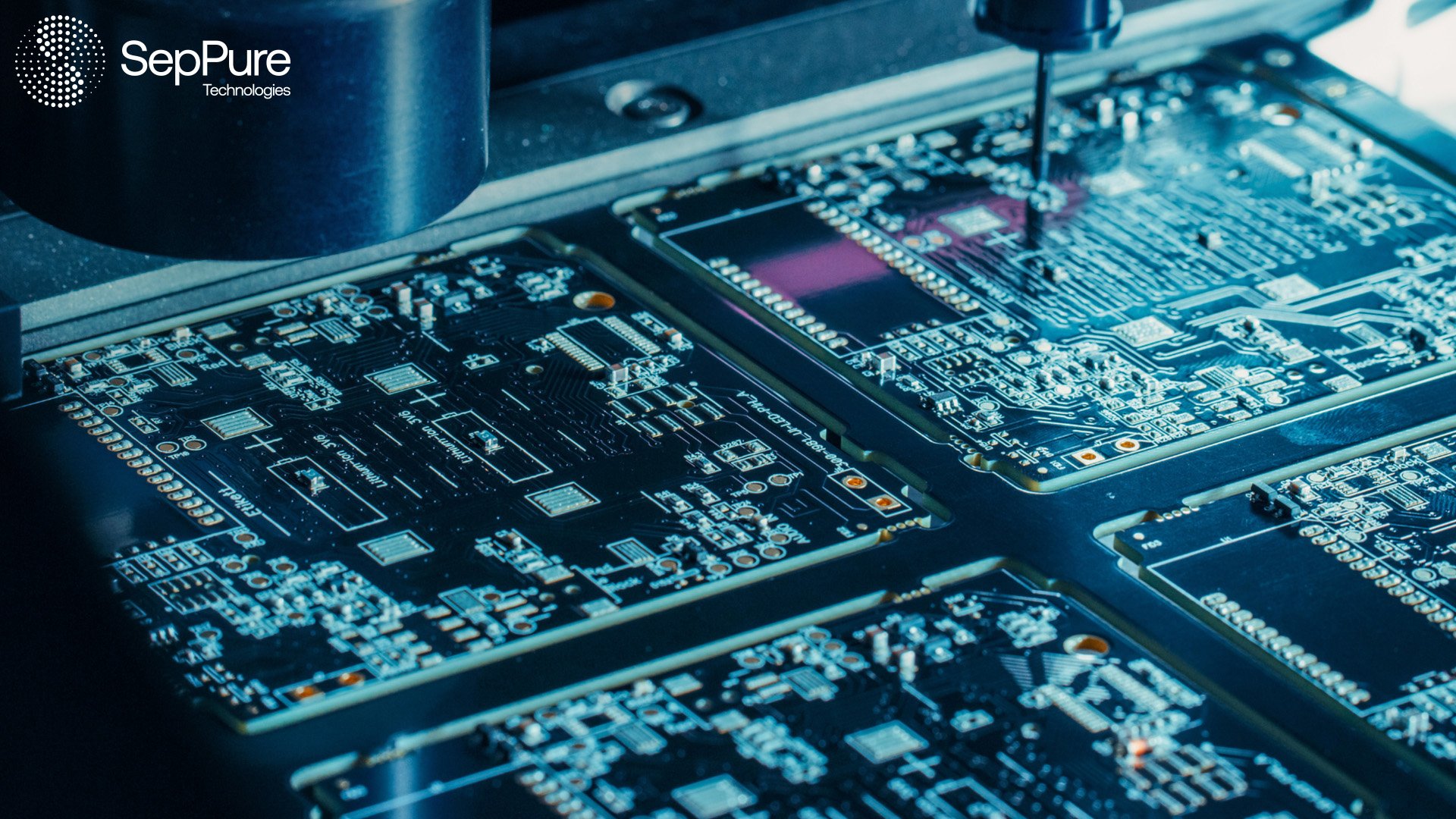Understanding Solvent Use in Semiconductor Manufacturing
The semiconductor industry drives modern technology, powering everything from smartphones and computers to advanced medical devices and automotive systems. This highly specialized industry heavily relies on chemicals, particularly solvents, in various steps of the process to ensure the quality of devices.
However, the heavy use of chemicals in this industry is an increasing concern due to safety and environmental risks associated with the types of chemicals used and the manufacturing process. Thus, effective solvent use and solvent management have become critical for the semiconductor industry. In this article, we explore the process of semiconductor manufacturing and in particular, the role of solvents in the process, as well as safer and more sustainable alternatives for the manufacturing process.
An Overview of Solvent Use in Semiconductor Manufacturing
The semiconductor manufacturing process involves several complex stages to create integrated circuits (ICs) or chips. The process starts with the deposition and etching of layers of various materials onto a substrate - usually a silicon wafer - to form the desired device structures. Next, these structures undergo a series of processes, including oxidation, photolithography, etching, doping, deposition, chemical-mechanical planarization (CMP), metallization, and various stages of testing. Depending on the type of semiconductor manufactured, there can be between 10 to 100 steps for cleaning alone. This is because the semiconductor needs to be thoroughly cleaned with powerful—and sometimes toxic—chemicals between every step.
Solvents are integral in several stages. For instance, during the wafer preparation, solvents such as acetone or isopropanol are used to remove organic contaminants and particles from the wafer surface before major processing steps. Similarly, in photolithography, solvents are employed to clean surfaces before applying photoresist. Substantial amounts of solvents are also used in etching, deposition, chemical-mechanical planarization (CMP), metallization, and various testing stages.
Challenges and Risks Associated with Solvent Use
1. Contamination and Impact on Product Quality
Solvent use in semiconductor processing comes with contamination risks, which can significantly affect product quality. If the solvents used during critical processes are not adequately purified, they can introduce impurities into the manufacturing process. Even trace levels of contaminants can lead to defects in semiconductor devices, resulting in compromised performance. Maintaining consistent solvent purity is essential to ensuring the reliability and precision of the final products, but it requires robust semiconductor filtration systems and rigorous management.
2. Health and Safety Risks
Solvent use in the semiconductor industry also presents significant health and safety risks to workers. Toxic and volatile solvents can cause various health issues, from skin irritation to severe respiratory problems. Additionally, the flammability of some solvents heightens the danger, making strict safety protocols, proper ventilation, and the use of personal protective equipment (PPE) crucial for safeguarding workers.
3. Environmental Concerns
Another significant challenge associated with solvent use in the semiconductor industry is its environmental impact. Many solvents used in semiconductor fabrication and manufacturing are volatile organic compounds (VOCs) that contribute to air pollution and environmental degradation. The disposal of spent solvents is also a major concern. Due to their low contamination tolerance, the solvents are often used for single applications, generating large amounts of waste. Moreover, improper disposal can lead to severe soil and water contamination, posing serious risks to ecosystems and public health. To mitigate these impacts, exploring waste management and treatment systems is crucial.
Although separation processes like distillation can manage and recover these solvents, they consume significant energy and contribute significantly to greenhouse gas (GHG) emissions. The substantial energy input required to heat and condense semiconductor solvents releases carbon dioxide (CO2) and other GHGs into the atmosphere. This exacerbates the environmental impact of industrial processes.
4. Cost and Sustainability
Aside from their environmental impact, single-use solvents incur substantial costs, encompassing their purchase, handling, and disposal. The problem does not end upon collection by waste management companies. Roughly 50% of spent solvents are recovered by heat-based separation processes, such as distillation, which consume significant energy for heating and condensing. This further exacerbates the total lifecycle costs and carbon footprint of the solvents.
As global demand for semiconductors continues to grow, the financial sustainability of these practices comes into question. The rising costs associated with solvent use and energy-intensive recovery processes may not be economically sustainable in the long term, and this underscores the need for more energy-efficient and environmentally sustainable solutions in the industry.
Empowering Circularity with SepPure Technologies
SepPure Technologies offers a solution for more sustainable and cost-effective nanofiltration solution to the challenges posted by solvent waste in semiconductor manufacturing. Our advanced membrane-based solvent recovery system, RE(SOLV)®, enables energy-efficient solvent recovery for reclaiming as much as 90% of spent solvents with high level of purity. RE(SOLV)® provides reclaimed solvents with as high as 99.9% purity, allowing the solvents to be reused for numerous processes within semiconductor processes as well as in other adjacent industrial sectors. This innovation cuts waste, greenhouse gas (GHG) emissions, and fresh solvent costs by up to 90%, driving a circular economy and lowering resource depletion and emissions. RE(SOLV)® empowers more energy-efficient semiconductor processes, promotes circularity, and supports both economic and environmental goals of the industry.
Reach out now to learn more!


